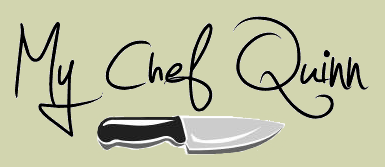In Part 1 of this series, I talked about the key features in a kitchen knife. To be clear, I believe you should seek out forged knives with full tang for all the knives in your tool kit. If your budget won’t allow that, at least choose one knife with these features.

Now that you know what features to look for, let’s consider which types of knives you should have in your kitchen.
First there will be your ‘go to’ knife – the one you use for most everything. At a minimum you should equip yourself with a chef’s knife. It is very important to consider length and width when choosing this knife. chef’s knives range in length from 8 to 12 inches and blade width from 1 ½ to 2 inches.
An 8 inch chef’s knife is a great multi-purpose length; a longer blade may make working with the tip seem unwieldy. I feel a 1 ½ inch width is a little thin and would encourage you to go for a 2 inch blade. With that said you should select the knife that is most comfortable for you. My main knife is a 10 inch chef’s knife with a taper-ground blade and a traditional shaped cutting edge. It is useful for every task.
Here are some other knives you should have for common kitchen tasks. This is where blade type—taper-ground, hollow-ground, serrated—really comes into play. Here’s and example. If you need to slice a round of crusty bread or a tomato a serrated slicer with a 10 inch blade is an excellent choice. I would also recommend a paring knife with a 4 inch blade for peeling and trimming fruits and vegetables.
I also own a 7 inch Santoku style—curved spine, hollow ground, flat blade—knife which is great for thin slicing; however, the flat cutting edge makes it less efficient for chopping because you can’t get a good rocking motion.
If you do a lot of work with meat on the bone or whole fish you may also consider a boning knife with a firm blade to cut around bones and a filleting knife with a flexible blade to separate the delicate fish flesh from the skin and bone.
A chef’s knife, a paring knife and a serrated knife are commonly included in basic knife sets. When evaluating a set, consider what other knife types are included and how often you think you may use the other types. It may make more sense to buy individual pieces. Just stay away from those “ever sharp” varieties. They have a rough-edge blade which prevents a clean chop and makes it difficult to mince effectively.
The most important thing to remember is to try out a knife before you buy it. I was recently in a Sur La Table store where a customer was testing out knives slicing peppers and tomatoes. You should be able to do this in any reputable store, but you might consider bringing your own vegetables to be sure there is something for you to work with.
In part three of this series I will cover knife care and storage so your investment can serve you in the kitchen for a lifetime. Until next time, what is your favorite knife to use in the kitchen?

